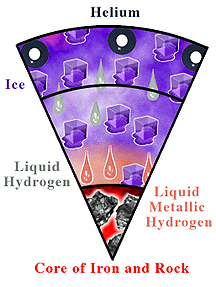This is a drawing showing the composition of the interior of Uranus.
The Composition of Uranus' Interior
The composition of Uranus' interior is mostly complex molecules such as methane and ammonia, in the form of ice.
Ice begins forming in the atmosphere of Uranus, near the methane cloud deck. That may seem funny considering the atmosphere is getting warmer there, but the barometer (pressure) is also increasing, and that has an effect on transforming methane from gas to ice.
The amount of ice in the air keeps increasing until there is slush, and then solid ice. This ice is warm (for Uranus) and can flow in a similar fashion to the warm silicate layers of Earth.
Compared to Jupiter and Saturn, Uranus has very little metallic hydrogen, and there is much more ice. The drawing shows an abundance of
purple ice "cubes" compared to that of Jupiter. Because the magnetosphere comes from the metallic layer, this means that Uranus should have a much smaller magnetosphere than does Jupiter.
The core of Uranus is made out of heavier, rocky and metal elements such as silicates and iron.
You might also be interested in:
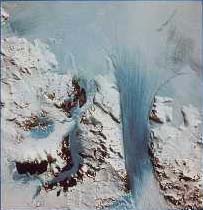
The figure to the left is an illustration of the flow of ice in the Antarctic region of the Earth. Ice flows readily, albeit slowly. Terrestrial glaciers are ample evidence of the fact that ice can move.
...more
Magnetospheres are generated with 1.) magnetic materials and 2.) with motions within the magnetic material. The terrestrial planets generate magnetospheres within the iron cores at the center. This leads
...more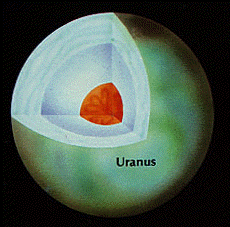
The Giant planets do not have the same kind of structure inside that the terrestrial planets do. Their evolution was quite different than that of the terrestrial planets, and they have much more gas and
...more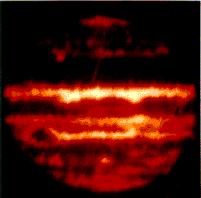
In astromony, it is a usual procedure to calculate the luminosity of a star, and this calculation indicates the energy and the temperature of the star. When the luminosity of the outer planets was calculated,
...more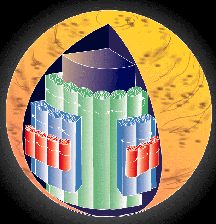
Motions, or currents in the interior of a gas-giant planet such as Uranus may be very different from the motions typical of the Earth's interior. A second idea for the motions in the interior of a gas-giant
...more
Motions in the interior of a planet help carry heat from the inside to the outside. The drawing to the left illustrates the kind of movements that happen in interior of a planet. Material rises from the
...more
Atmospheres of the giant planets have definitely evolved from their formation out of the primitive solar nebula. How much they have evolved remains to be seen, however. Because of their enormous gravity,
...more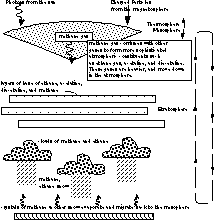
The major gaseous constituent of the atmosphere is methane. At the uppermost reaches of the atmosphere, near the thermosphere, methane gas breaks apart due to the influence of energetic photons or charged
...more
